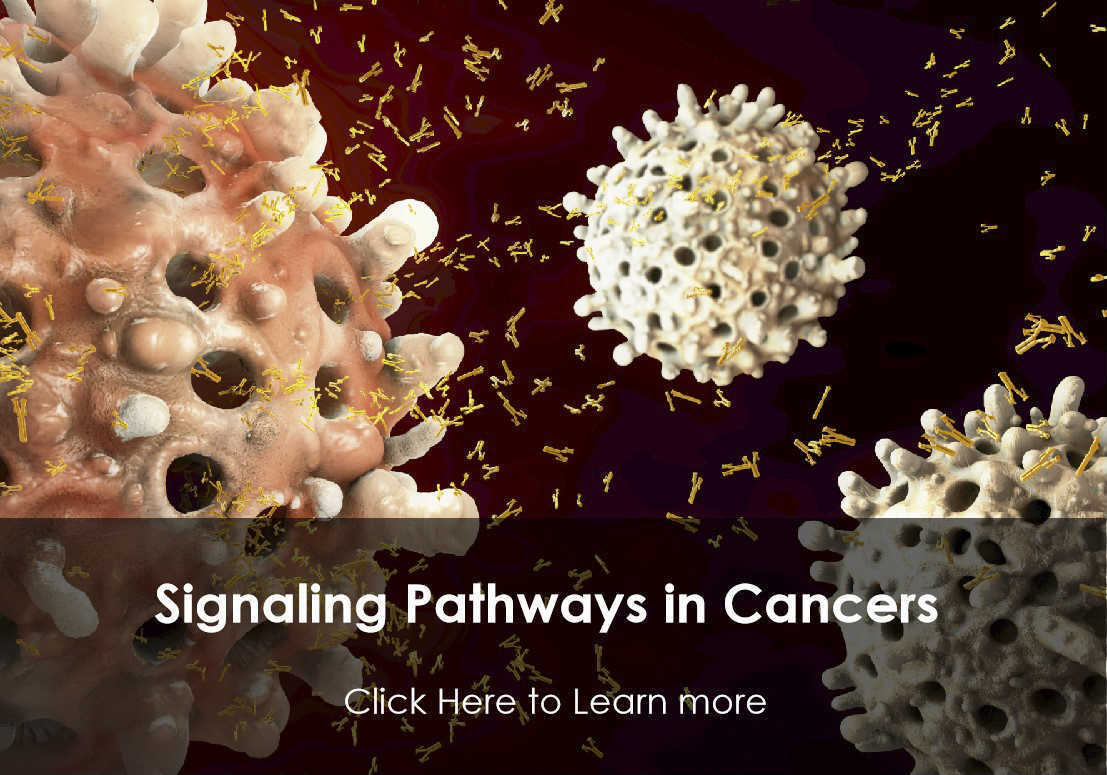NBN
Mutations in this gene are associated with Nijmegen breakage syndrome, an autosomal recessive chromosomal instability syndrome characterized by microcephaly, growth retardation, immunodeficiency, and cancer predisposition. The encoded protein is a member of the MRE11/RAD50 double-strand break repair complex which consists of 5 proteins. This gene product is thought to be involved in DNA double-strand break repair and DNA damage-induced checkpoint activation. [provided by RefSeq, Jul 2008]
Full Name
Nibrin
Function
Component of the MRE11-RAD50-NBN (MRN complex) which plays a critical role in the cellular response to DNA damage and the maintenance of chromosome integrity. The complex is involved in double-strand break (DSB) repair, DNA recombination, maintenance of telomere integrity, cell cycle checkpoint control and meiosis. The complex possesses single-strand endonuclease activity and double-strand-specific 3'-5' exonuclease activity, which are provided by MRE11. RAD50 may be required to bind DNA ends and hold them in close proximity. NBN modulate the DNA damage signal sensing by recruiting PI3/PI4-kinase family members ATM, ATR, and probably DNA-PKcs to the DNA damage sites and activating their functions. It can also recruit MRE11 and RAD50 to the proximity of DSBs by an interaction with the histone H2AX. NBN also functions in telomere length maintenance by generating the 3' overhang which serves as a primer for telomerase dependent telomere elongation. NBN is a major player in the control of intra-S-phase checkpoint and there is some evidence that NBN is involved in G1 and G2 checkpoints. The roles of NBS1/MRN encompass DNA damage sensor, signal transducer, and effector, which enable cells to maintain DNA integrity and genomic stability. Forms a complex with RBBP8 to link DNA double-strand break sensing to resection. Enhances AKT1 phosphorylation possibly by association with the mTORC2 complex.
Biological Process
Blastocyst growth Source: Ensembl
Cell population proliferation Source: Ensembl
DNA damage checkpoint signaling Source: MGI
DNA damage response, signal transduction by p53 class mediator Source: UniProtKB
DNA double-strand break processing Source: ComplexPortal
DNA duplex unwinding Source: BHF-UCL
DNA strand resection involved in replication fork processing Source: ComplexPortal
Double-strand break repair Source: UniProtKB
Double-strand break repair via homologous recombination Source: GO_Central
Homologous recombination Source: ComplexPortal
Intrinsic apoptotic signaling pathway Source: Ensembl
Isotype switching Source: Ensembl
Meiotic cell cycle Source: UniProtKB-KW
Mitotic G2/M transition checkpoint Source: ComplexPortal
Mitotic G2 DNA damage checkpoint signaling Source: UniProtKB
Negative regulation of telomere capping Source: BHF-UCL
Neuromuscular process controlling balance Source: Ensembl
Positive regulation of kinase activity Source: BHF-UCL
Positive regulation of protein autophosphorylation Source: BHF-UCL
Positive regulation of telomere maintenance Source: BHF-UCL
Regulation of cell cycle Source: UniProtKB
Regulation of DNA-dependent DNA replication initiation Source: UniProtKB
T-circle formation Source: BHF-UCL
Telomere maintenance Source: UniProtKB
Telomere maintenance via telomere trimming Source: BHF-UCL
Telomeric 3' overhang formation Source: BHF-UCL
Cell population proliferation Source: Ensembl
DNA damage checkpoint signaling Source: MGI
DNA damage response, signal transduction by p53 class mediator Source: UniProtKB
DNA double-strand break processing Source: ComplexPortal
DNA duplex unwinding Source: BHF-UCL
DNA strand resection involved in replication fork processing Source: ComplexPortal
Double-strand break repair Source: UniProtKB
Double-strand break repair via homologous recombination Source: GO_Central
Homologous recombination Source: ComplexPortal
Intrinsic apoptotic signaling pathway Source: Ensembl
Isotype switching Source: Ensembl
Meiotic cell cycle Source: UniProtKB-KW
Mitotic G2/M transition checkpoint Source: ComplexPortal
Mitotic G2 DNA damage checkpoint signaling Source: UniProtKB
Negative regulation of telomere capping Source: BHF-UCL
Neuromuscular process controlling balance Source: Ensembl
Positive regulation of kinase activity Source: BHF-UCL
Positive regulation of protein autophosphorylation Source: BHF-UCL
Positive regulation of telomere maintenance Source: BHF-UCL
Regulation of cell cycle Source: UniProtKB
Regulation of DNA-dependent DNA replication initiation Source: UniProtKB
T-circle formation Source: BHF-UCL
Telomere maintenance Source: UniProtKB
Telomere maintenance via telomere trimming Source: BHF-UCL
Telomeric 3' overhang formation Source: BHF-UCL
Cellular Location
Nucleus
PML body
Other locations
telomere
Chromosome
Note: Localizes to discrete nuclear foci after treatment with genotoxic agents (PubMed:26438602, PubMed:10783165, PubMed:26215093). Acetylation of 'Lys-5' of histone H2AX (H2AXK5ac) promotes NBN/NBS1 assembly at the sites of DNA damage (PubMed:26438602).
PML body
Other locations
telomere
Chromosome
Note: Localizes to discrete nuclear foci after treatment with genotoxic agents (PubMed:26438602, PubMed:10783165, PubMed:26215093). Acetylation of 'Lys-5' of histone H2AX (H2AXK5ac) promotes NBN/NBS1 assembly at the sites of DNA damage (PubMed:26438602).
Involvement in disease
Nijmegen breakage syndrome (NBS):
A disorder characterized by chromosomal instability, radiation sensitivity, microcephaly, growth retardation, immunodeficiency and predisposition to cancer, particularly to lymphoid malignancies.
Breast cancer (BC):
A common malignancy originating from breast epithelial tissue. Breast neoplasms can be distinguished by their histologic pattern. Invasive ductal carcinoma is by far the most common type. Breast cancer is etiologically and genetically heterogeneous. Important genetic factors have been indicated by familial occurrence and bilateral involvement. Mutations at more than one locus can be involved in different families or even in the same case.
Aplastic anemia (AA):
A form of anemia in which the bone marrow fails to produce adequate numbers of peripheral blood elements. It is characterized by peripheral pancytopenia and marrow hypoplasia.
Defects in NBN might play a role in the pathogenesis of childhood acute lymphoblastic leukemia (ALL).
A disorder characterized by chromosomal instability, radiation sensitivity, microcephaly, growth retardation, immunodeficiency and predisposition to cancer, particularly to lymphoid malignancies.
Breast cancer (BC):
A common malignancy originating from breast epithelial tissue. Breast neoplasms can be distinguished by their histologic pattern. Invasive ductal carcinoma is by far the most common type. Breast cancer is etiologically and genetically heterogeneous. Important genetic factors have been indicated by familial occurrence and bilateral involvement. Mutations at more than one locus can be involved in different families or even in the same case.
Aplastic anemia (AA):
A form of anemia in which the bone marrow fails to produce adequate numbers of peripheral blood elements. It is characterized by peripheral pancytopenia and marrow hypoplasia.
Defects in NBN might play a role in the pathogenesis of childhood acute lymphoblastic leukemia (ALL).
PTM
Phosphorylated by ATM in response of ionizing radiation, and such phosphorylation is responsible intra-S phase checkpoint control and telomere maintenance.
View more
Anti-NBN antibodies
+ Filters
 Loading...
Loading...
Target: NBN
Host: Mouse
Antibody Isotype: IgG1
Specificity: Human
Clone: 4H9
Application*: IP, WB
Target: NBN
Host: Mouse
Antibody Isotype: IgG2a
Specificity: Human
Clone: CBT4148
Application*: WB, IH, IC, F
Target: NBN
Host: Mouse
Antibody Isotype: IgG2a
Specificity: Human, Rat
Clone: CBT3273
Application*: WB, IH, IC, F
Target: NBN
Host: Rabbit
Antibody Isotype: IgG
Specificity: Human, Mouse, Rat
Clone: D6J5I
Application*: WB, IP, IF (IC)
Target: NBN
Host: Rabbit
Antibody Isotype: IgG
Specificity: Human
Clone: CBNH-167
Application*: E, WB
Target: NBN
Host: Mouse
Antibody Isotype: IgG1
Specificity: Human
Clone: NBS1-501
Application*: WB, IP, E, IC
Target: NBN
Host: Mouse
Antibody Isotype: IgG2a
Specificity: Human, Rat
Clone: 7E4A2
Application*: WB, P, F, IC, IF
Target: NBN
Host: Rabbit
Antibody Isotype: IgG
Specificity: Mouse, Rat, Human
Clone: Y112
Application*: WB, IP, P, IC, F, CI
Target: NBN
Host: Mouse
Antibody Isotype: IgG1
Specificity: Human, Monkey
Clone: CBWJN-1188
Application*: IH, IF
Target: NBN
Host: Mouse
Antibody Isotype: IgG1
Specificity: Human
Clone: H7
Application*: IH, WB
Target: NBN
Host: Mouse
Antibody Isotype: IgG2b
Specificity: Human
Clone: G8
Application*: WB
Target: NBN
Host: Mouse
Antibody Isotype: IgG1
Specificity: Human
Clone: G3
Application*: WB
Target: NBN
Host: Mouse
Antibody Isotype: IgG1
Specificity: Human
Clone: E7
Application*: IH, WB
Target: NBN
Host: Mouse
Antibody Isotype: IgG2a
Specificity: Human
Clone: E11
Application*: IH, WB
Target: NBN
Host: Mouse
Specificity: Human
Clone: B-5
Application*: WB, IP, IF, E
Target: NBN
Host: Mouse
Antibody Isotype: IgG1
Specificity: Human
Clone: 9H2
Application*: WB, IH
Target: NBN
Host: Mouse
Antibody Isotype: IgG2a
Specificity: Human
Clone: 7E4C2
Application*: WB, F, E, IH, IF, MC
Target: NBN
Host: Mouse
Antibody Isotype: IgG1
Specificity: Human
Clone: 6D10
Application*: WB, IH
Target: NBN
Host: Mouse
Antibody Isotype: IgG1
Specificity: Human
Clone: 5A6
Application*: WB
Target: NBN
Host: Mouse
Antibody Isotype: IgG1
Specificity: Human
Clone: 3G3
Application*: WB
Target: NBN
Host: Mouse
Antibody Isotype: IgG2a
Specificity: Human
Clone: 3A4
Application*: WB, IH
Target: NBN
Host: Mouse
Antibody Isotype: IgG1
Specificity: Human
Clone: 3A2
Application*: WB, IH
Target: NBN
Host: Mouse
Antibody Isotype: IgG1
Specificity: Human, Chicken, Dog, Mouse, Rat
Clone: CBWJN-0357
Application*: WB, IF
Target: NBN
Host: Mouse
Antibody Isotype: IgG2a
Specificity: Human
Clone: 2T17
Application*: WB, IP
Target: NBN
Host: Mouse
Antibody Isotype: IgG2b
Specificity: Human
Clone: 2F5
Application*: WB, IH
Target: NBN
Host: Mouse
Antibody Isotype: IgG2b
Specificity: Human
Clone: 1G8
Application*: WB
Target: NBN
Host: Mouse
Antibody Isotype: IgG2a
Specificity: Human
Clone: 1G1
Application*: WB, IH
Target: NBN
Host: Mouse
Antibody Isotype: IgG1
Specificity: Human
Clone: 1F11
Application*: WB, IH
Target: NBN
Host: Mouse
Antibody Isotype: IgG1
Specificity: Human
Clone: 1C9
Application*: WB
Target: NBN
Host: Mouse
Antibody Isotype: IgG1
Specificity: Human, Mouse
Clone: 1C3
Application*: WB, IF, IP
Target: NBN
Host: Mouse
Specificity: Human, Rat
Clone: CBWJN-0215
Application*: E, F, IC, IH, WB
Target: NBN
Host: Mouse
Specificity: Human
Clone: CBWJN-0209
Application*: E, F, IC, IH, WB
Target: NBN
Host: Mouse
Antibody Isotype: IgG2a
Specificity: Human
Clone: 6E11
Application*: P, WB
Target: NBN
Host: Mouse
Antibody Isotype: IgG1
Specificity: Human
Clone: 8E7
Application*: P, WB
Target: NBN
Host: Mouse
Antibody Isotype: IgG1
Specificity: Human
Clone: 8E6
Application*: IH, WB
Target: NBN
Host: Mouse
Antibody Isotype: IgG2b
Specificity: Human, Mouse, Rat
Clone: CBWJN-1187
Application*: WB
Target: NBN
Host: Mouse
Antibody Isotype: IgG1
Specificity: Human, Mouse
Clone: CBWJN-1186
Application*: IP
Target: NBN
Host: Mouse
Antibody Isotype: IgG2a, κ
Specificity: Human
Clone: 3E4
Application*: E, WB
Target: NBN
Host: Mouse
Antibody Isotype: IgG1
Specificity: Human, Mouse, Rat
Clone: 1D7
Application*: WB, IF, IP
More Infomation
Hot products 
-
Mouse Anti-AGO2 Recombinant Antibody (V2-634169) (CBMAB-AP203LY)

-
Mouse Anti-BSN Recombinant Antibody (219E1) (CBMAB-1228-CN)

-
Mouse Anti-CD24 Recombinant Antibody (ALB9) (CBMAB-0176CQ)

-
Rabbit Anti-ADRA1A Recombinant Antibody (V2-12532) (CBMAB-1022-CN)

-
Rabbit Anti-CAMK2A Recombinant Antibody (BA0032) (CBMAB-0137CQ)

-
Mouse Anti-CARD11 Recombinant Antibody (CBFYC-0811) (CBMAB-C0866-FY)

-
Mouse Anti-Acetyl SMC3 (K105/K106) Recombinant Antibody (V2-634053) (CBMAB-AP052LY)

-
Mouse Anti-DHFR Recombinant Antibody (D0821) (CBMAB-D0821-YC)

-
Mouse Anti-ADGRE5 Recombinant Antibody (V2-360335) (CBMAB-C2088-CQ)

-
Mouse Anti-CAT Recombinant Antibody (724810) (CBMAB-C8431-LY)

-
Rabbit Anti-BAD (Phospho-Ser136) Recombinant Antibody (CAP219) (CBMAB-AP536LY)

-
Mouse Anti-CTNND1 Recombinant Antibody (CBFYC-2414) (CBMAB-C2487-FY)

-
Mouse Anti-CGAS Recombinant Antibody (CBFYM-0995) (CBMAB-M1146-FY)

-
Mouse Anti-BPGM Recombinant Antibody (CBYY-1806) (CBMAB-2155-YY)

-
Mouse Anti-8-oxoguanine Recombinant Antibody (V2-7697) (CBMAB-1869CQ)

-
Mouse Anti-BIRC3 Recombinant Antibody (16E63) (CBMAB-C3367-LY)

-
Mouse Anti-AZGP1 Recombinant Antibody (CBWJZ-007) (CBMAB-Z0012-WJ)

-
Rat Anti-ADAM10 Recombinant Antibody (V2-179741) (CBMAB-A1103-YC)

-
Mouse Anti-AKT1 (Phosphorylated S473) Recombinant Antibody (V2-505430) (PTM-CBMAB-0067LY)

-
Mouse Anti-ABL2 Recombinant Antibody (V2-179121) (CBMAB-A0364-YC)

For Research Use Only. Not For Clinical Use.
(P): Predicted
* Abbreviations
- AActivation
- AGAgonist
- APApoptosis
- BBlocking
- BABioassay
- BIBioimaging
- CImmunohistochemistry-Frozen Sections
- CIChromatin Immunoprecipitation
- CTCytotoxicity
- CSCostimulation
- DDepletion
- DBDot Blot
- EELISA
- ECELISA(Cap)
- EDELISA(Det)
- ESELISpot
- EMElectron Microscopy
- FFlow Cytometry
- FNFunction Assay
- GSGel Supershift
- IInhibition
- IAEnzyme Immunoassay
- ICImmunocytochemistry
- IDImmunodiffusion
- IEImmunoelectrophoresis
- IFImmunofluorescence
- IGImmunochromatography
- IHImmunohistochemistry
- IMImmunomicroscopy
- IOImmunoassay
- IPImmunoprecipitation
- ISIntracellular Staining for Flow Cytometry
- LALuminex Assay
- LFLateral Flow Immunoassay
- MMicroarray
- MCMass Cytometry/CyTOF
- MDMeDIP
- MSElectrophoretic Mobility Shift Assay
- NNeutralization
- PImmunohistologyp-Paraffin Sections
- PAPeptide Array
- PEPeptide ELISA
- PLProximity Ligation Assay
- RRadioimmunoassay
- SStimulation
- SESandwich ELISA
- SHIn situ hybridization
- TCTissue Culture
- WBWestern Blot

Online Inquiry







